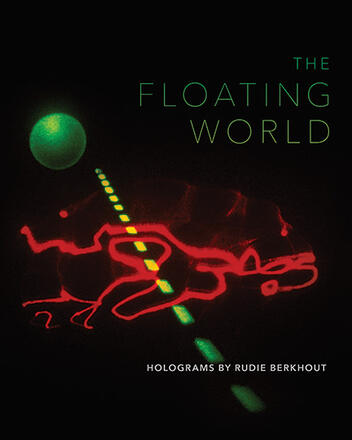
The Floating World
Holograms by Rudie Berkhout
Documents the art and science of three-dimensional abstract artworks created in the 1970s and 1980s by one of the leading innovators of fine art holography.
Description
The first-ever catalogue dedicated to light artist and holographer Rudie Berkhout, The Floating World focuses on the transmission holograms Berkhout made from 1978 to 1989, a peak period of his creativity and professional recognition. In a transmission hologram, a rear-mounted light shines on a glass plate to illuminate a three-dimensional image. Curator Daniel Belasco situates Berkhout in the art and culture of his day, from the mass-produced holograms on the cover of National Geographic to the other artists working at the intersection of technology and audience participation. Holography scholar Martina Mrongovius provides a detailed account of the technology and craft in Berkhout's working process. Additional catalogue components include reprints of two important artist statements, multiple illustrations of exhibited art works, bibliography, and detailed exhibition history. Berkhout envisioned his abstract holograms as the marriage of science, art, and philosophy.
Daniel Belasco is Curator of Exhibitions and Programs at the Samuel Dorsky Museum of Art at the State University of New York at New Paltz. Martina Mrongovius is an artist, historian, and Director of the Center for the Holographic Arts, New York. Rudie Berkhout (1946–2008) used light as the principal medium for his work. Combining his passion for technology with his drive to explore his own aesthetic frontiers, he found his calling in holography and became one of its foremost practitioners. >Sara J. Pasti is the Neil C. Trager Director of the Samuel Dorsky Museum of Art at the State University of New York at New Paltz.